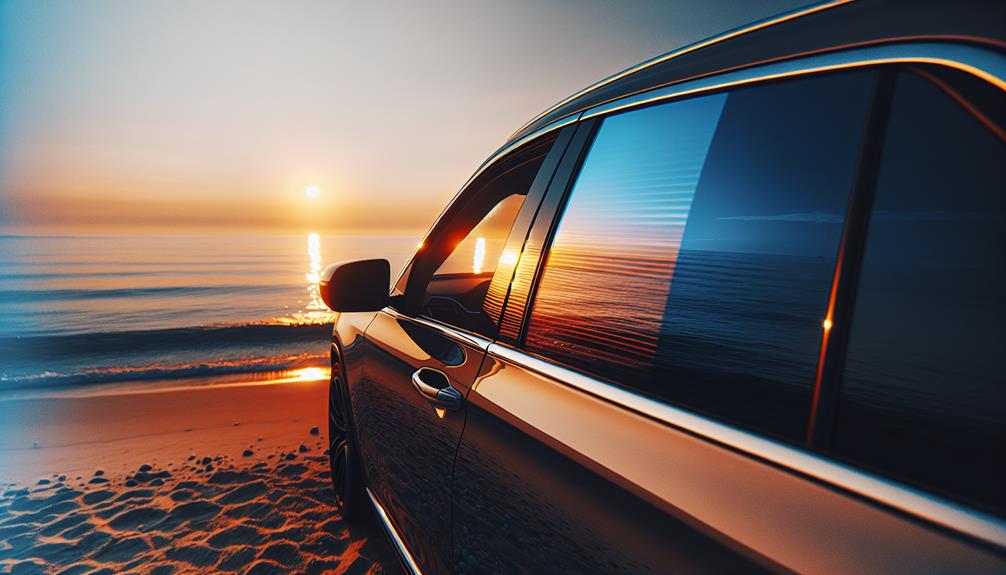Exploring Dyed Window Tint: How It Works and Why It’s Popular

In the realm of automotive and architectural modifications, dyed window tint stands out for its multifaceted functionality and aesthetic versatility. Comprising several layers, including an adhesive bottom layer, a middle layer infused with dye, and a protective top coating, this tinting method primarily operates by absorbing solar energy, thereby reducing transmission of ultraviolet and visible light. This process not only diminishes heat and glare but also enhances privacy and extends the longevity of interior fabrics by minimizing sun damage. Auto glass tinting further complements these benefits, offering a specialized solution for vehicles that enhances both appearance and functionality. As we explore the variegated benefits and applications of dyed window tint, one might ponder the evolving technology behind its manufacturing and the implications for future innovations in energy efficiency and personal security.
Understanding Dyed Window Tint
Dyed window tint involves applying a layer of dyed film to glass, which absorbs solar radiation and reduces glare and heat transmission through windows. This film typically consists of multiple layers, each serving a unique function. The base layer is adhesive, ensuring secure attachment to the glass surface, while the top layer is scratch-resistant, safeguarding the tint’s longevity and efficacy.
The central component is the dye-infused layer, crafted from a combination of polyester and dye. This combination filters visible light and blocks UV radiation, thereby moderating the window’s transparency and reflectivity. The process by which the dye absorbs solar energy is pivotal; it converts incoming solar energy into a less disruptive form of energy, which is then dissipated across the surface of the glass. This mechanism is crucial for maintaining the interior temperature balance and protecting occupants from direct sunlight exposure.
Tailoring the density and composition of the dye allows for customization of the tint’s light absorption properties, facilitating a spectrum of tint shades from light to dark according to individual preferences and regulatory compliance. This customizable aspect fosters a sense of community and identity among users, who often seek both aesthetic appeal and practical functionality in their choice of window tinting solutions.
Benefits of Dyed Tinting
While dyed window tinting primarily serves to reduce solar heat and glare, it also significantly enhances privacy and security for vehicle and building occupants.
The dyed film consists of multiple layers, where the deepest layer is infused with dye that absorbs sunlight, thereby diminishing the heat and visible light that enters. This absorption mechanism helps maintain lower internal temperatures, reducing the reliance on air conditioning and, consequently, decreasing energy consumption.
Moreover, the opacity provided by the dyed layers ensures that from the outside, visibility into the vehicle or building is restricted. This attribute not only increases privacy but also adds a layer of security; potential intruders cannot easily see inside to identify valuables or assess the occupancy, thus deterring break-ins.
Additionally, the tint helps strengthen the glass it adheres to, by holding shattered pieces in place in the event of an accident or breakage, thereby enhancing safety.
The integration of dyed tinting also extends to UV protection. Although primarily aimed at reducing heat and light, the dyed material also blocks harmful ultraviolet rays, protecting occupants from UV exposure, which can lead to skin damage and interior fading. This multifunctional approach makes dyed tinting a popular choice among those seeking comprehensive benefits in one solution.
In conclusion, dyed window tint, characterized by its layered composition and dye-infused technology, offers a multifaceted solution to solar radiation management.
By absorbing UV rays and diminishing glare, it enhances privacy and security, while also providing thermal comfort.
Its customizable nature allows for adherence to varying legal standards and personal preferences.
Thus, dyed window tint, combined with auto glass tinting, stands as a superior choice for optimizing vehicular and architectural glass, aligning functionality with aesthetic demands and regulatory compliance.